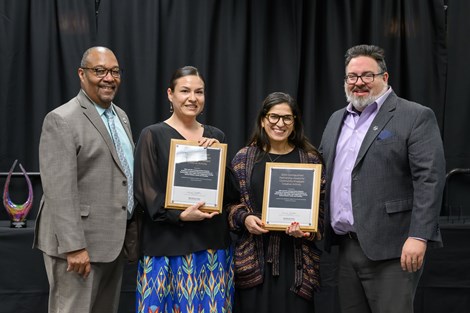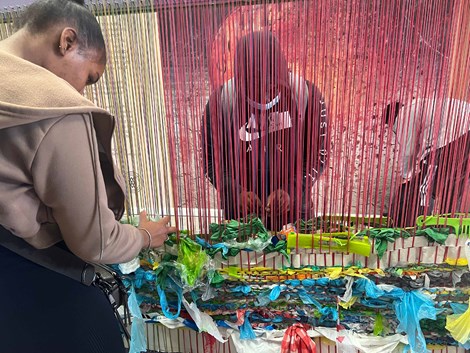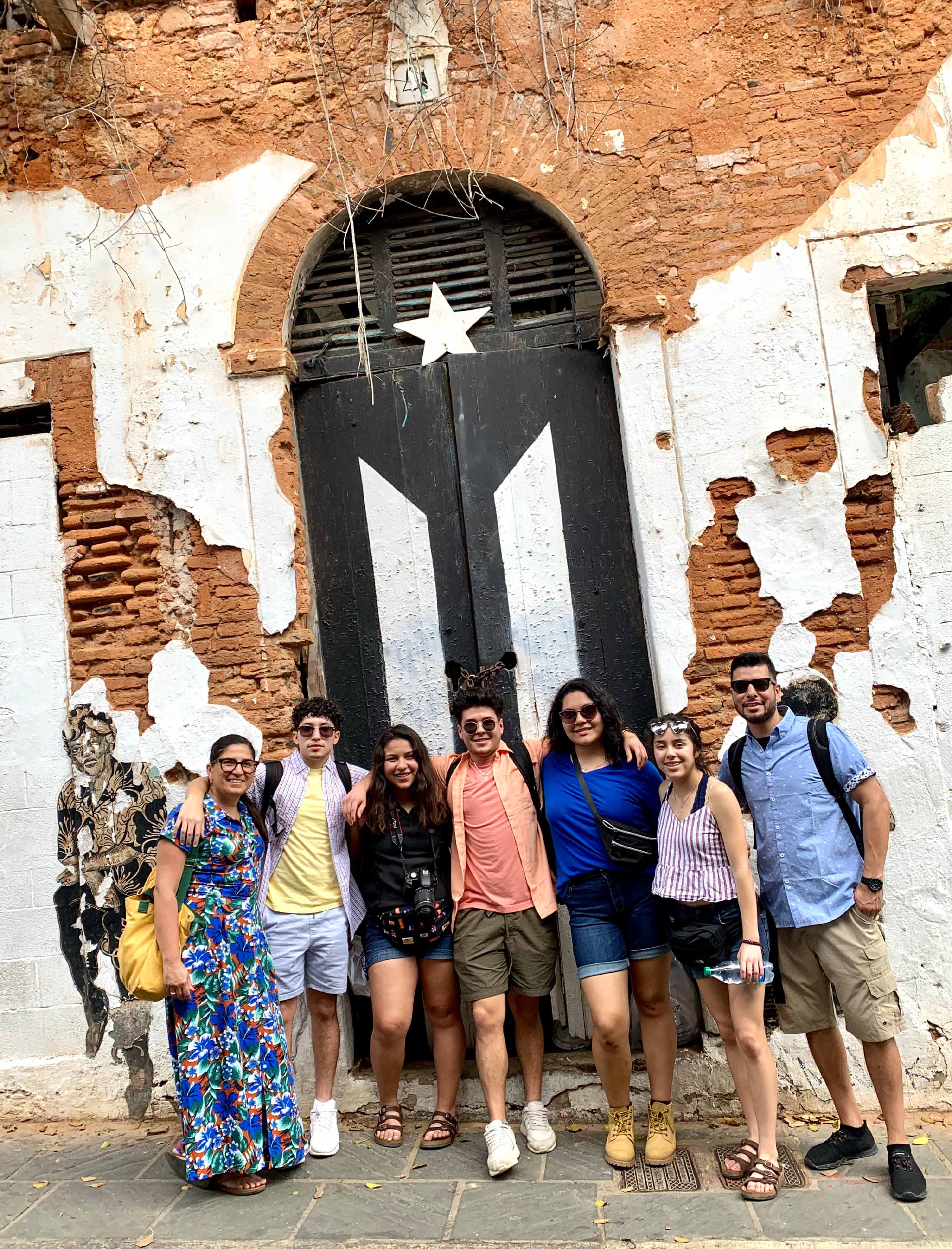CLS Core Faculty Estrella Torrez is an associate professor in the Residential College in the Arts and Humanities, or RCAH, at Michigan State University. Torrez holds a Ph.D. in educational thought and sociocultural studies and a master’s degree in early childhood multicultural education and bilingual education from the University of New Mexico. Torrez is a Gates Millennium Scholar and recently received MSU Outreach and Engagement’s 2023 Distinguished Partnership Award for Community-Engaged Creative Activity for her work with the Lansing School District: Building an Intergenerational Constellation of Partnerships with Latinx and Indigenous Lansing School District Youth and Families.
Raised in a family where everybody was responsible for doing what they could to support one another, I learned from a young age that everybody had to show up to thrive as a community and as a family. I bring that idea with me when working in higher education, and it is the core of the work I do with Indigenous and Latinx communities. Thankfully, there is a beautiful community of individuals across MSU’s campus and beyond who are equally dedicated to this philosophy.
The Indigenous Youth Empowerment Program, or IYEP, of which I serve as the co-director with Emily Sorroche, Jackie Lloyd and Ramona Henry, began with the goal of uplifting Indigenous youth in the Greater Lansing area. Since its founding in 2008, IYEP has expanded to include parents and elders while focusing on supporting and empowering the youth through an intergenerational practice. We learned that to truly care for youth, we must do so by working across generations. IYEP hosts several events across the Lansing area open to the entire community. Due to our breadth of programs, we have had the opportunity to build relationships across the area with those who also are looking to support Indigenous populations and communities. For example, the Lansing Public Media Center has generously opened its space to IYEP programs, as have Fenner Nature Center and the Nokomis Cultural Heritage Center. Through these partnerships, IYEP has grown its family and capacity to expand its programming.
Of my current projects, the Green New DEAL, which stands for Detroit Ecological Arts Leaders, serves to bridge Detroit-based artists — including a poet, a mixed media visual artist and an audio spatial artist — in conversation with environmental sciences. Green New DEAL is an arts-based urban ecology program developed with my colleagues, Asia Dowtin in MSU’s Department of Forestry and Heidi Quick in Detroit’s downtown University Prep Science and Math schools. The project has four constituencies working together, including high school students in Detroit, undergraduates in RCAH, professional artists and researchers. Our project centers the arts as a rigorous research method that will enable us to better understand local urban and ecological issues. Furthermore, it empowers students to creatively lead and innovate through deep listening and collaboration.
The Latinx Leadership Program, or LLP, another collaborative project in Lansing, focuses on the intersection of Chicanx/Latinx history, community arts and social justice. We developed the afterschool curriculum for LLP alongside high school and MSU students (RCAH and Chicano/Latino Studies) as well as high school counselors to provide a historical understanding of Latinx community experiences and advocacy so that local youth can add that to their existing toolbox.
Through LLP and the Nuestrxs Cuentos projects, I mentor youth involved in these projects. Some of the individuals who I’ve known since they were in sixth grade, I now see around campus as Spartans. Over the past fifteen years, I’ve built relationships with them and their families through these programs that bring together community-members from on and off-campus. Each of these programs encourage young folx to see themselves eventually attending MSU and being able to thrive as Spartans.
As I look toward the future, I want to see the university recognize the meaningful work people are doing with communities and that the most significant outcomes of these collaborations don’t always result in publications. It takes time to build trust and rapport. It’s taken me a long time to establish trust with these families and rightfully so. If my focus had been on “scholarly productivity,” I would have missed the opportunities to create meaningful, enriching and long-term relationships.
These collaborative projects intertwine with what I teach in my courses through RCAH. I want my students to see how historically underserved communities have used their own respective resources as forms of resistance. Through this, my goal is for RCAH and MSU students to engage in activities that illustrate how people continue to fight for their communities and how they do that intergenerationally. Some of the best movements and resistance happens when it's intergenerational. It is crucial for students to walk away from our time together understanding the relationship educational institutions have with historically underserved communities and how these communities advocate for past, present and future generations.
I typically say that people like to speak on behalf of youth and say, “youth are future leaders,” but I disagree with that wholeheartedly. Young people are leaders now! As adults, we must step back and listen to them deeply and sincerely.





